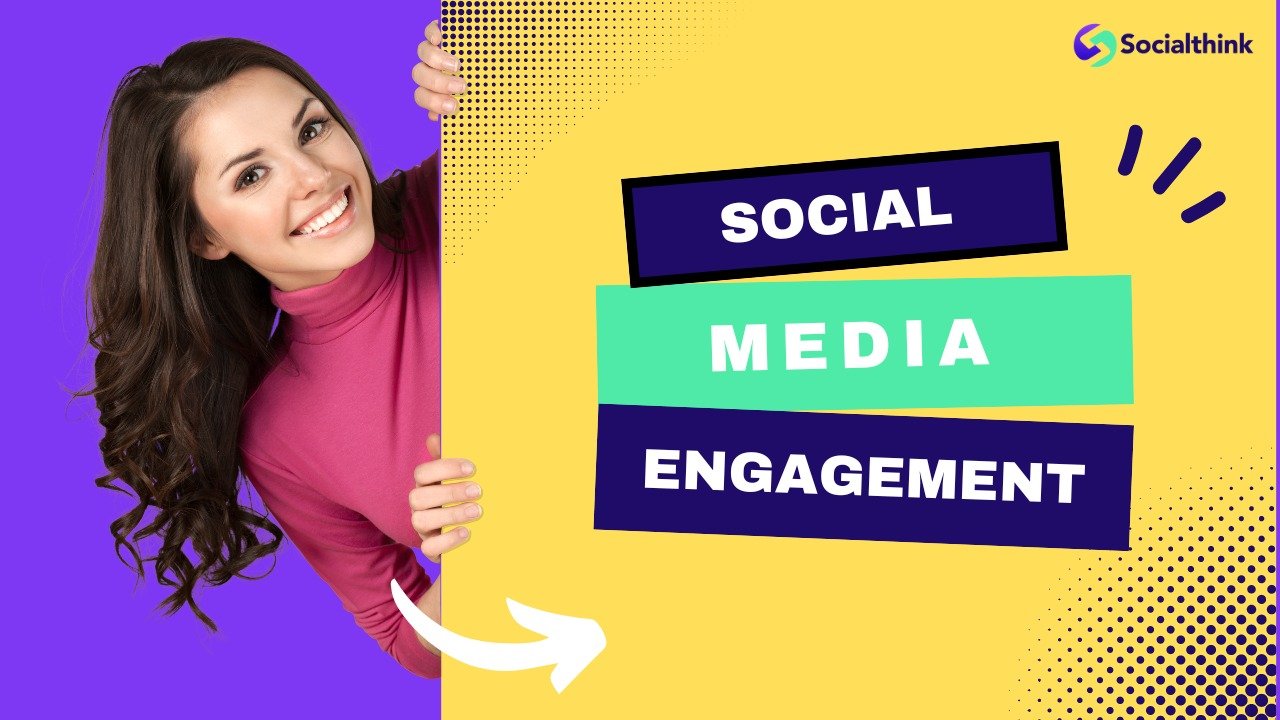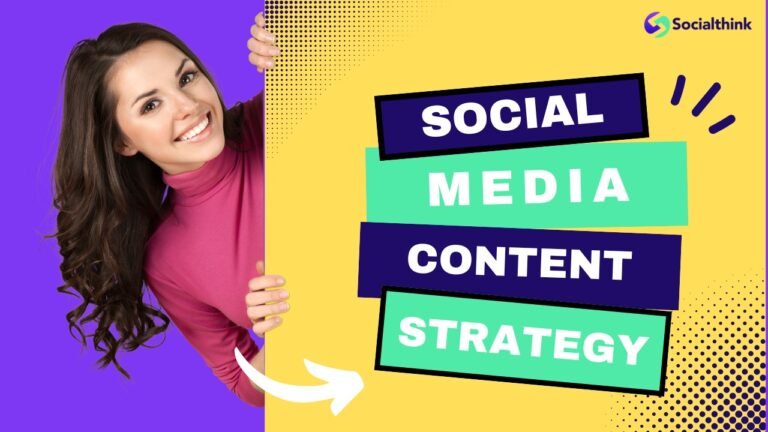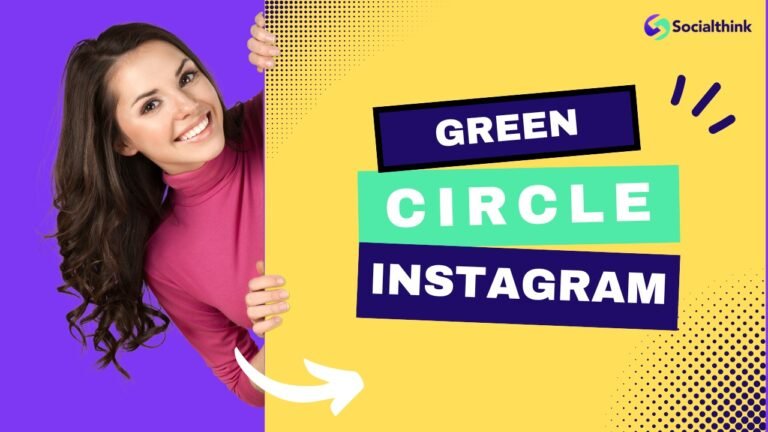Social Media Engagement: What is it, Benefits, Strategies & Tips
In today’s digital landscape, social media engagement is an important component of any successful marketing strategy.
At Social Think, we specialize in helping brands leverage social media analytics and insights to drive meaningful business results.
In this article, we’ll dive deep into what social media engagement means, why it matters, and share proven strategies to boost engagement across your social media accounts.
What is Social Media Engagement?
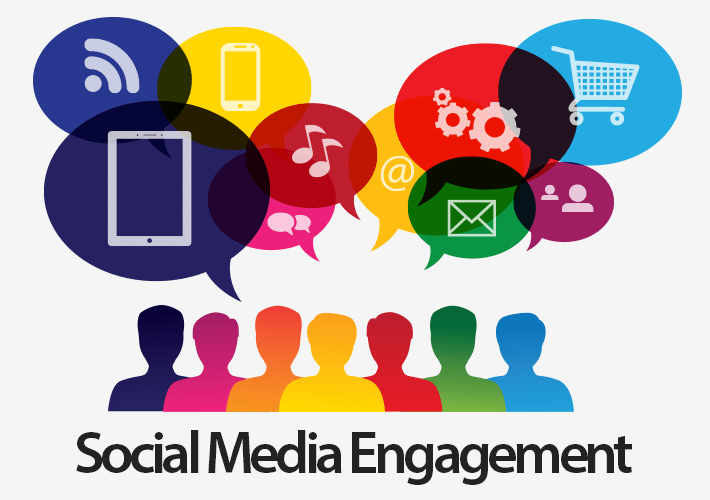
Social media engagement refers to the interactions and connections made between a brand and its target audience on social media platforms. This includes likes, comments, shares, direct messages, and other forms of interaction with your social media content. Engagement is a key indicator of how well your social media marketing efforts are resonating with your follower base.
What are the Benefits of Social Media Engagement?

Building an engaged audience on social media offers numerous benefits for brands:
Increase Brand Awareness
High engagement levels help expand your reach and get your brand in front of new potential customers. When followers interact with your content, it appears in their connections’ feeds, exposing you to a wider audience.
Create Real Relationships With Current Customers
Engaging with your current customer base on social media helps foster loyalty and turn one-time buyers into brand advocates. Responding to comments, answering questions, and featuring user-generated content makes customers feel valued.
Increase Trust With Potential Customers
An active, engaged social media presence builds credibility and trust with potential customers. They can see real people interacting with your brand, which makes you appear more trustworthy and approachable than competitors with a dormant social media page.
Establish Your Brand as an Industry Leader
Sharing insightful, valuable content that sparks discussion positions your brand as a thought leader in your industry. Higher engagement on this type of content affirms your authority and expertise among your target audience.
What’s the ROI of Social Engagement?

While more difficult to measure than metrics like conversions, the return on investing in social media engagement is substantial. Engaged customers spend more, refer friends and family, and are more likely to choose your brand over a competitor. A study by Gallup found that companies with high customer engagement scores outperform their competitors by 23%.
How to Boost Social Media Engagement?

Be Truly Social
Social media is meant for two-way conversations. Respond to comments, ask and answer questions, and interact with other brands and influencers in your space. This human connection is essential for driving engagement.
Have a Consistent, Authentic Voice
Establish a clear, authentic brand voice and stay true to it across all your social content. Followers should recognize your posts in their feed without looking at the name. An inconsistent voice makes your brand appear less trustworthy.
Know Your Algorithms
Understanding the algorithms of each social media platform is key to getting eyes on your content. For example, the Instagram algorithm prioritizes posts with high engagement in the first 30 minutes. Posting when your audience is most active can help with this.
How Can You Measure Social Media Engagement?

Measuring social media engagement requires a multi-faceted approach.
At Social Think, we analyze data across several key areas:
- Analysis of Multiple Social Media Channels: Looking at engagement data across all your active social media accounts rather than in silos gives a holistic view of performance. Certain types of content may perform better on some platforms than others.
- Dashboards and Visualization: Compiling key engagement metrics into a centralized, visual dashboard makes it easy to track performance over time and share with stakeholders. Social Think offers customizable dashboards as part of our social media management platform.
- Sentiment Analysis: Sentiment analysis tools gauge the emotion behind engagements, whether positive, negative or neutral. This provides insight into how audiences are perceiving your brand and content.
- Emotion Analysis and Effort Scoring: Going beyond sentiment, emotion analysis identifies specific emotions like joy, anger, or disappointment in social content. Effort scoring assesses how much effort a customer has to expend to interact with your brand on social.
- Segmented Data: Breaking down engagement data by segments like age, location, or customer type reveals valuable insights. You may uncover an untapped audience or find certain groups are more likely to convert.
- Operational Data: Analyzing social engagement alongside operational metrics like response time, resolution rate, and agent performance helps optimize your social customer service.
6 Key Social Media Metrics Used To Measure Engagement

- Engagement Rate: Engagement rate is the number of engagements (likes, comments, shares, etc) divided by your total number of followers. It measures the percentage of your audience that actively interacts with your content.
- Amplification Rate: Amplification rate is the ratio of shares per post to the number of overall followers. A high amplification rate indicates your content is being shared frequently, expanding your reach.
- Virality Rate: Similar to amplification rate, virality rate looks at the number of people who shared your post divided by the number of unique views it had. It measures how likely someone is to share your content after seeing it.
- Click-Through Rate (CTR): For posts with a call-to-action or link, CTR measures the percentage of people who clicked through. It’s useful for understanding how effectively your content drives traffic back to your website.
- Conversion Rate: If your social media goals include lead generation or sales, conversion rate is an important metric. It measures the percentage of visitors from social media who complete a desired action like filling out a form or making a purchase.
- Audience Growth Rate: While not strictly an engagement metric, audience growth rate ties into engagement. Track the speed at which you’re gaining new followers. Sharp spikes or plateaus can indicate changes in content performance.
Why is Social Media Engagement Important For Brands?

Beyond the benefits covered earlier, social media engagement is important for brands because it impacts several key factors:
- Authenticity: Engaging one-on-one with followers humanizes your brand and makes you appear more authentic and approachable. In an age where consumers crave authenticity, this is a major advantage.
- Credibility: Consistent, quality engagement increases your credibility as a brand. Followers see you regularly interacting and providing value, which builds trust.
- Customer Loyalty: Engaged customers are loyal customers. By regularly interacting with your audience, you foster a sense of community and belonging that keeps them coming back.
- Brand Awareness: High engagement rates put your brand in front of more potential customers, increasing overall brand awareness.
How to Increase Social Media Engagement?

To increase social media engagement, it is important to follow certain strategies.
1. Understanding Your Platforms
Each social media platform has its own best practices for driving engagement.
On Instagram, for example, aesthetic, visual content and Stories tend to perform best. On Twitter, jumping on trending topics and hashtags is key. Understanding the nuances of each platform allows you to tailor your approach.
2. Get to Know Your Audience
Dive into your social media analytics to understand who your audience is, when they’re most active, and what content they respond to best. Create your social media content calendar around these insights for maximum engagement.
3. Jump in on Trending Conversations
Participating in trending topics and hashtags gets your brand in front of a wider audience and shows you’re tuned into what’s current. Add value to the conversation rather than just trying to capitalize on a trend.
4. Interact With Your Audience
Respond to comments and direct messages promptly and thoughtfully. Like and comment on posts where your brand is tagged or mentioned. These small interactions go a long way in making your audience feel heard and valued.
What Role Does Social Media Play in Stakeholder Engagement?
Social media offers a direct line of communication to key stakeholders like customers, employees, investors, and community members. Regularly engaging with these groups on social media helps keep them informed and invested in your brand.
Stakeholder engagement on social media can take many forms, from addressing customer service issues to sharing company news and updates to highlighting employee stories and achievements.
How Do You Calculate a Social Media Engagement Rate?

To calculate your engagement rate, start by defining what you consider an “engagement.” This might include likes, comments, shares, and clicks. Then, divide the total number of engagements on a post by your total number of followers and multiply by 100 to get a percentage.
For example, say a post receives 100 likes, 25 comments, and 10 shares, and you have 10,000 followers. Your calculation would be (135 / 10,000) x 100 = 1.35%.
What is a Good Social Media Engagement Rate?

A “good” engagement rate varies by platform and industry, but a general rule of thumb is between 1-5%.
- On Facebook and Twitter, an engagement rate of 0.5-1% is considered good.
- On Instagram, aim for 3-5%. Anything above those benchmarks is considered very high engagement.
Keep in mind that these are averages, and your brand’s engagement rate may be higher or lower depending on your audience size and industry. It’s most important to benchmark against your own past performance and that of close competitors.
Social Media Engagement Strategy

A comprehensive social media engagement strategy involves several key components:
- Increase Engagement Quality: It’s not just about the number of engagements, but the quality. A thoughtful comment is worth more than a quick like. Create content that sparks meaningful conversations and encourages your audience to engage deeply.
- Leverage Employee Advocacy: Employees can be powerful brand advocates on social media. Encourage them to interact with and share your social content to expand your reach and engagement.
- Authentically Engage With Your Audience: Avoid canned, generic responses. Take the time to authentically engage with your audience as individuals. Address them by name, thoroughly answer questions, and show appreciation for feedback.
- Optimize Your Strategy For Maximum Engagement: Continuously monitor and analyze your social media engagement metrics. Test different types of content, posting times, and formats to see what resonates best with your audience. Adjust your strategy based on these insights.
- Ask For Feedback On Your Content: Actively solicit feedback from your audience on what content they want to see more (or less) of. This not only gives you valuable insights but also makes followers feel involved and invested in your brand.
How to Formulate an Effective Social Media Engagement Strategy?
- Set clear engagement goals that ladder up to broader business objectives
- Conduct a social media audit to assess current engagement levels and identify areas for improvement
- Define your target audience and create personas to guide content creation
- Establish your brand voice and content pillars
- Create a content calendar outlining your posting cadence and themes
- Assign roles and responsibilities for content creation, publishing, and engagement
- Monitor engagement metrics and adjust strategy as needed based on performance
Tips For Increasing Your Social Media Engagement

- Use appealing visuals like pictures, videos, and charts.
- Add popular topics and hashtags.
- Pose queries and conduct polls for engagement.
- Reply promptly to comments and messages.
- Arrange competitions and gifts.
- Partner with influencers and similar brands.
- Share content from users.
- Use live video for direct interaction.
- Publish at the best times for your followers.
- Try new content styles like Stories and Reels.
How Does Social Media Engagement Differ Across Social Media Platforms?
- Facebook’s algorithm prioritizes posts that create conversations and interactions. Posts with many comments, especially lengthy ones, usually do well. Live videos also receive high engagement on Facebook.
- Instagram focuses on visuals, like high-quality images and videos with faces, which get the most engagement. Using hashtags can boost reach on Instagram.
- X (Formerly Twitter) is fast-paced, with trends changing rapidly. Joining relevant trends and retweeting boosts engagement.
- LinkedIn targets professionals, so share industry insights and company news for better performance. Active participation in LinkedIn Groups enhances engagement.
- Snapchat appeals to a younger audience with visual and funny content. Engagement is more through private Snaps and Chats than public interactions.
- TikTok thrives on creative video content, viral challenges, trendy sounds, effects, and personalizing trends for engagement.
Which Social Media Platform Averages The Greatest Engagement Levels?
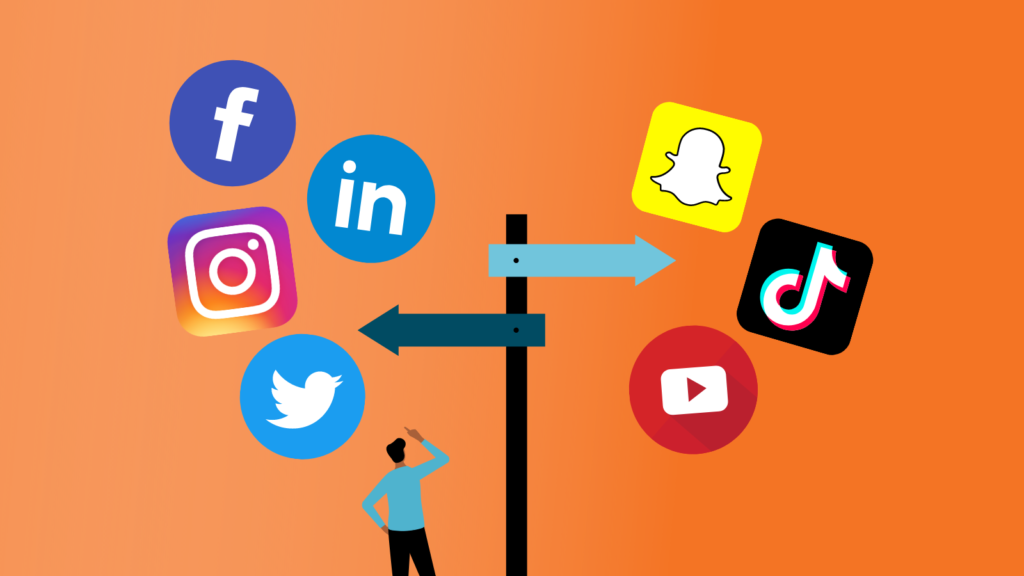
Instagram consistently sees higher engagement rates compared to other platforms, with an average engagement rate of 1.16%. This is likely due to the visual, immersive nature of the platform.
However, TikTok is quickly gaining ground, with an average engagement rate of 5.96%. Facebook and Twitter tend to have lower engagement rates, around 0.27% and 0.07% respectively.
FAQ’s:
What is the Key to Social Media Engagement?
Consistently providing value to your audience. This could be in the form of entertainment, education, inspiration, or utility. When your content serves a purpose for your followers, they’re more likely to engage with it.
Why is Engagement so Important?
Engagement is a key indicator of how well your social media content is resonating with your audience. High engagement leads to increased reach, brand awareness, trust, and ultimately can drive profitable customer action.
How Do You Build Engagement on Social Media?
Focus on creating quality content that sparks conversation, emotions, and action. Interact with your audience regularly, showing them you value their input and feedback. Stay active and consistent in your posting and engagement.
How Often Should I Post to Maximize Engagement?
This varies by platform, but a general rule of thumb is:
- Facebook: 1-2 times per day
- Instagram: 1-3 times per day
- Twitter: 3-10 times per day
- LinkedIn: 1-2 times per day
What is the Maximum Engagement Level that a Brand Can Reach?
There is no definitive upper limit to social media engagement, as viral posts can achieve engagement rates in the thousands of percents. However, sustaining extremely high engagement levels consistently over time is very challenging and rare, as engagement typically declines as audience size grows and algorithms and audience preferences change.
Conclusion
Social media engagement is a critical component of any successful social media marketing strategy. By consistently providing valuable, relevant content and actively interacting with your audience, you can boost engagement and build lasting relationships with your followers.
At Social Think, we specialize in helping brands optimize their social media efforts for maximum engagement and business impact. Our social media management platform offers in-depth analytics and reporting to track and measure engagement levels across all your social channels.
Ready to take your social media engagement to the next level? Contact the experts at Social Think today to learn how we can help you develop and execute a winning social media engagement strategy. With our data-driven insights and proven best practices, you’ll be well on your way to building an engaged, loyal social media community.

